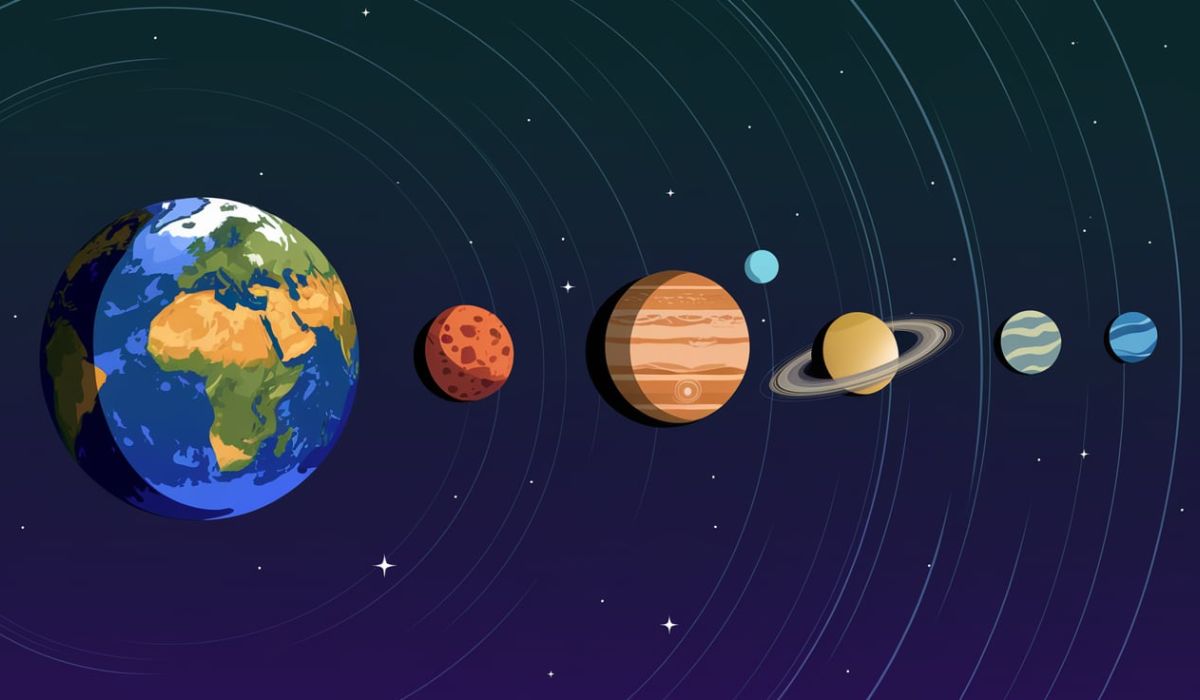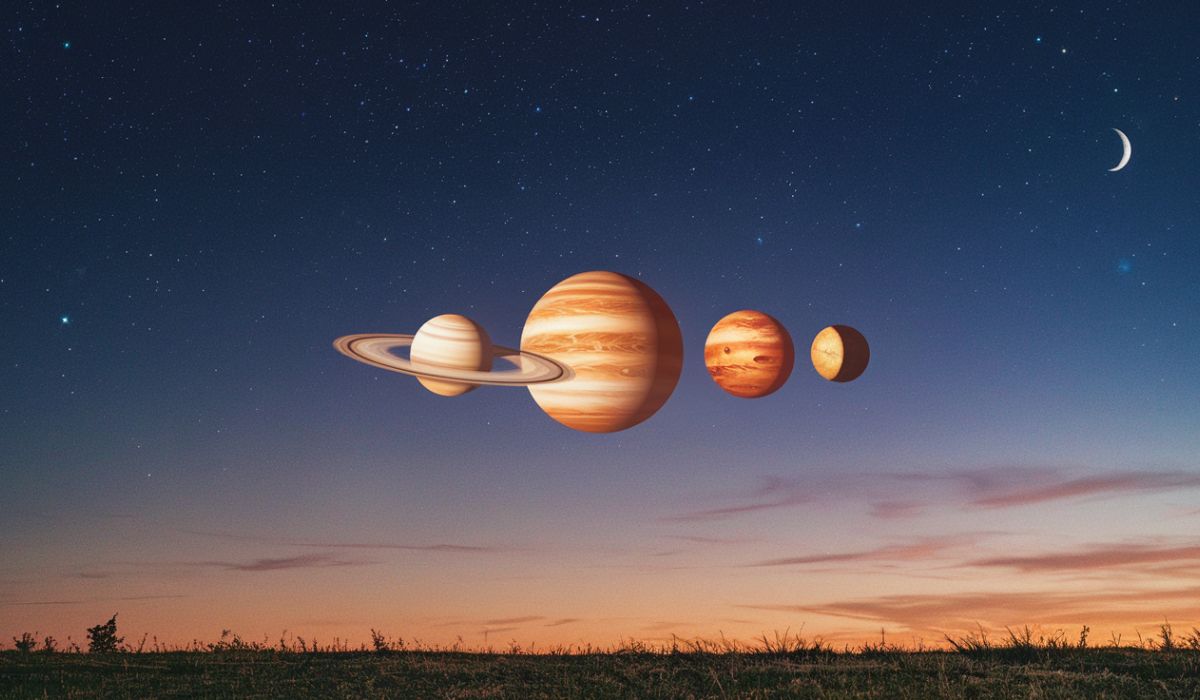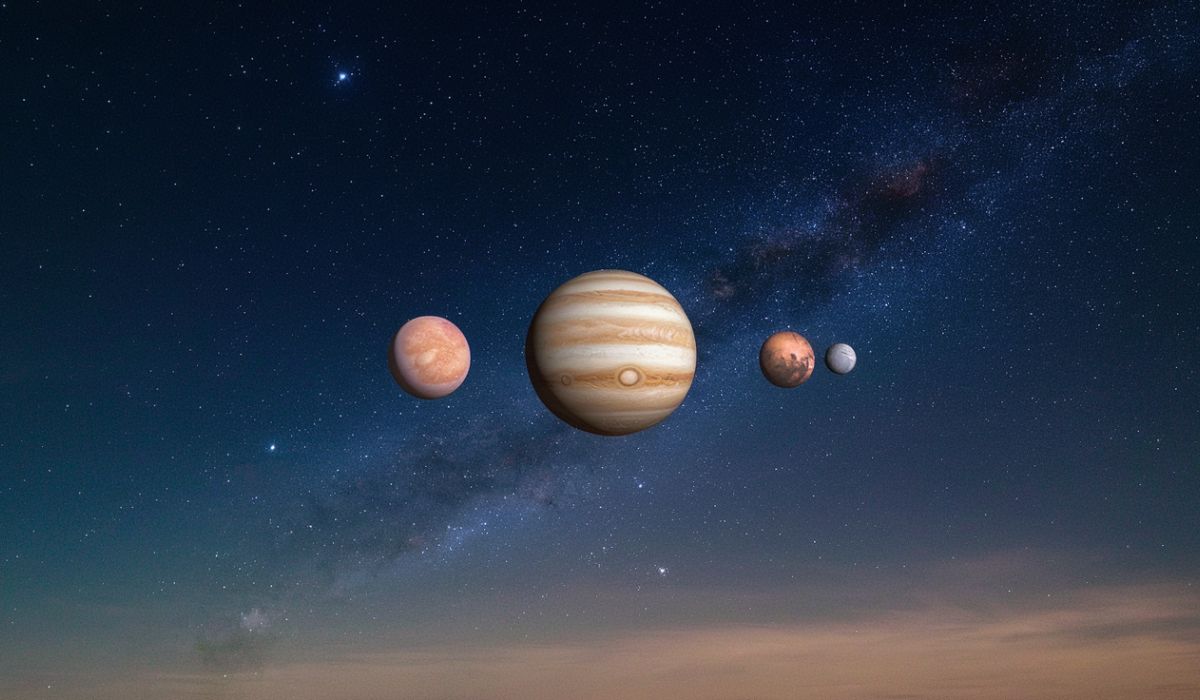Have you ever wondered what it’s like when planets align in the night sky? Imagine the sky lighting up with the perfect cosmic arrangement, where several planets come together in a straight line. It’s a rare and awe-inspiring event that stirs curiosity among both stargazers and casual observers. But why do we care when “planets are aligned tonight”? What does it mean, and how can you witness this spectacular sight?
In this article, we’ll dive into everything you need to know about planet alignments. From what causes them, to when you can expect the next alignment, and how you can view it yourself—let’s explore the magic of the cosmos.
What Does ‘Planets Aligned Tonight’ Mean?

“Planets aligned tonight” is a phrase that often catches the attention of both amateur astronomers and casual sky watchers. Essentially, it refers to a rare event when several planets in our solar system line up in the night sky. While it may seem like a perfectly straight line, the alignment is actually a line of sight from Earth, and the planets are usually still millions of miles apart in space.
It’s important to note that true alignments, where planets are exactly in one line, are extremely rare. Most alignments you see are simply a cluster of planets within a certain region of the sky. Even so, witnessing such an event can still be a breathtaking experience!
How Do Planets Align?
Planets align when the orbits of different planets bring them into roughly the same area of the sky from our point of view on Earth. Since the planets in our solar system orbit the Sun at different speeds, their positions relative to each other shift constantly. Every so often, these planets seem to “line up” in a visual alignment that is observable from Earth.
However, alignments don’t happen frequently because each planet’s orbit is elliptical (not a perfect circle), and their speeds vary. When they do align, it’s an incredible sight, and stargazers around the world keep an eye on the skies for these rare events.
The Science Behind Planetary Alignments
Planetary alignments occur because of the way celestial bodies move through space. Each planet in our solar system has a specific orbit around the Sun. As the planets move along these orbits, their positions relative to each other change over time.
When the planets are positioned in such a way that they appear aligned from Earth, it’s mostly due to a coincidence of timing. For example, if Earth, Venus, Mars, and Jupiter are all in roughly the same region of their orbits at the same time, they will appear to align in the sky.
Why Do Planetary Alignments Happen So Rarely?

You might be wondering: why don’t planets align every night? The reason is simple: the planets in our solar system all travel on different orbits, at different speeds. Some planets, like Mercury, are close to the Sun and move quickly, while others, like Neptune, are farther away and move more slowly. As a result, their alignments occur very infrequently.
When alignments do occur, they are often partial and involve only a few planets, but it’s the rare full alignment of multiple planets that gets people excited!
How Can You Spot Aligned Planets?
Spotting aligned planets doesn’t require any special tools, although binoculars or a telescope can enhance your view. Look for a series of bright points in the sky that appear to be grouped together. These points are planets, and when they are aligned, they often appear in a straight line or arc across the sky.
Make sure to check the timing and location of the alignment in advance, as these events are brief and may not last long into the night.
When Is the Next Planetary Alignment?
The next planetary alignment depends on the current positions of the planets in their orbits. While we can predict when alignments will happen, they don’t occur on a set schedule.
To find out when the next alignment will occur, keep an eye on astronomy websites, apps, or local observatories. These resources will provide specific dates and times for upcoming celestial events, including planetary alignments.
The Best Locations to View Aligned Planets

The best place to see planetary alignments is anywhere with clear skies and minimal light pollution. While you can technically see alignments from any location, areas away from city lights—such as rural or high-altitude regions—offer the clearest view of the night sky.
For those living in urban areas, consider traveling to a nearby park or designated dark sky area for the best stargazing experience.
Can Planets Really Align Perfectly?
In theory, planets can align perfectly in space, but from our vantage point on Earth, such alignments are extremely rare. A “perfect” alignment, where all planets line up in a single line, is almost impossible to witness. Instead, we typically see partial alignments or clusters, where the planets are close to one another, but not perfectly lined up.
Even so, witnessing a close alignment is still a thrilling experience, and it’s worth keeping an eye on the sky when the next one occurs.
Is It Safe to Look at Planets Aligned Tonight?
Yes, it is entirely safe to observe the planets aligned tonight with your naked eye, binoculars, or telescope. Unlike the Sun, which requires special eye protection, planets pose no threat to your vision. Just make sure you don’t confuse any of the planets with distant stars or other celestial objects.
What Does a Planetary Alignment Mean for You?
From a scientific perspective, planetary alignments have no direct impact on Earth. They are simply visual phenomena that result from the movement of the planets. However, for many people, these alignments hold cultural, spiritual, or even astrological significance.
For others, it’s simply a chance to witness the wonders of the cosmos and marvel at the vastness of our solar system.
Historical and Cultural Significance of Planetary Alignments
Throughout history, planetary alignments have been seen as powerful omens or signs. In ancient cultures, the alignment of planets often signified major events, such as the birth of a king or the rise of a civilization. Even today, some believe that these alignments may hold mystical or astrological meaning.
In many cultures, the alignment of planets has inspired myths, stories, and celebrations. The alignment of the planets was often seen as a time of great change or transformation.
Planetary Alignments and Astrology
In astrology, planetary alignments are often associated with specific events or shifts in personal energy. When planets align, astrologers may interpret this as a time for growth, transformation, or introspection. Some believe that the positioning of planets can affect moods, relationships, or decisions.
However, it’s important to remember that astrology is not based on scientific evidence. While it can be fun to explore, it’s best to enjoy planetary alignments as a beautiful cosmic event rather than something that directly influences your fate.
How to Prepare for Viewing the Planets Aligned Tonight
If you’re planning to view the planets aligned tonight, here are a few tips:
- Check the weather: Make sure the sky will be clear for optimal viewing.
- Pick a dark spot: Avoid city lights for the best view.
- Get the timing right: Know when the alignment will occur, as it may only last for a short period.
- Bring a friend: Stargazing is always more enjoyable when shared.
Can You See the Planets Aligned Without a Telescope?
Yes, you can! Most planetary alignments are visible to the naked eye, especially if you are in a dark location with minimal light pollution. A telescope can certainly enhance the experience, allowing you to see the details of the planets, but it’s not necessary to enjoy the sight of planets aligned tonight.
Fun Facts About Planetary Alignments
- The closest alignment of planets was in 1982, when five planets lined up in the same region of the sky.
- Saturn is the most distant planet visible without a telescope.
- Some alignments occur in such a way that the planets seem to form a “string” or “arc” across the sky.
Conclusion
The sight of “planets aligned tonight” is a magical event, one that captivates stargazers and casual observers alike. Though these alignments are rare, they offer a chance to connect with the cosmos and marvel at the wonders of our solar system. So, keep an eye on the sky, and don’t miss out on the next chance to see these celestial giants line up in the night sky!
FAQs
1. How often do planets align?
Planetary alignments are rare, happening once every few years or decades, depending on the planets involved.
2. Can I see planets align without special equipment?
Yes! Most alignments are visible to the naked eye, though binoculars or a telescope can improve the experience.
3. What does it mean when planets align?
In science, planetary alignments are simply a visual event, but some cultures and astrologers attach special meanings to these occurrences.
4. When is the next planetary alignment?
Check astronomy websites or apps for the exact timing of the next alignment, as these events vary in frequency.
5. Can planetary alignments affect Earth?
No, planetary alignments have no direct impact on Earth. They are fascinating events, but they don’t cause any physical changes on our planet.
